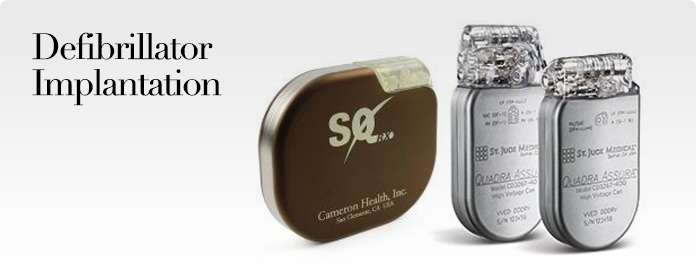| An implantable defibrillator is an electronic device which can sense the heartbeat and detect ventricular tachycardia and ventricular fibrillation, automatically charge up and deliver a high energy shock to revert the heart to a normal rhythm. It is implanted in the same way as a permanent pacemaker. (See TREATMENT: PERMANENT PACEMAKER IMPLANTATION for more information) |
|
| During the implantation procedure, after the leads have been inserted and connected to the pulse generator, an additional part of the procedure called defibrillation testing may be performed. The purpose of this is to test the system by inducing ventricular fibrillation, waiting for the defibrillator to detect it and automatically charge up and deliver a high energy shock to terminate the arrhythmia. This provides confidence that the system will function when the arrhythmia actually happens. Defibrillation testing is done under deep sedation and with an external defibrillator backup. |
|
| Two kinds of implantable defibrillators are available |
|
| 1. |
Totally subcutaneous ICD – the whole system is under the skin but not inside the heart. |
|
| 2. |
Transvenous ICD – the wire component of the system is inside the heart, the battery component is under the skin. |
|





